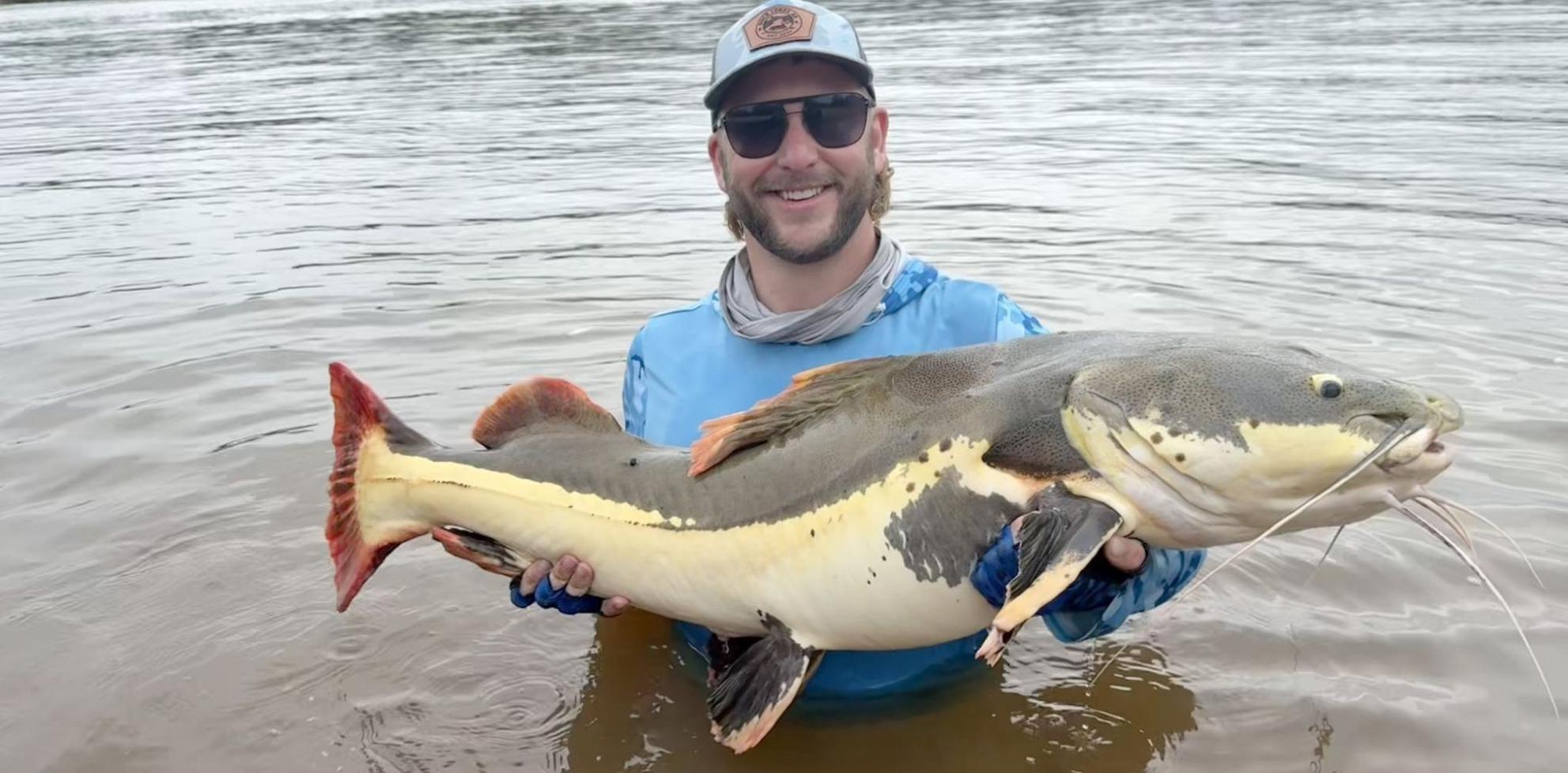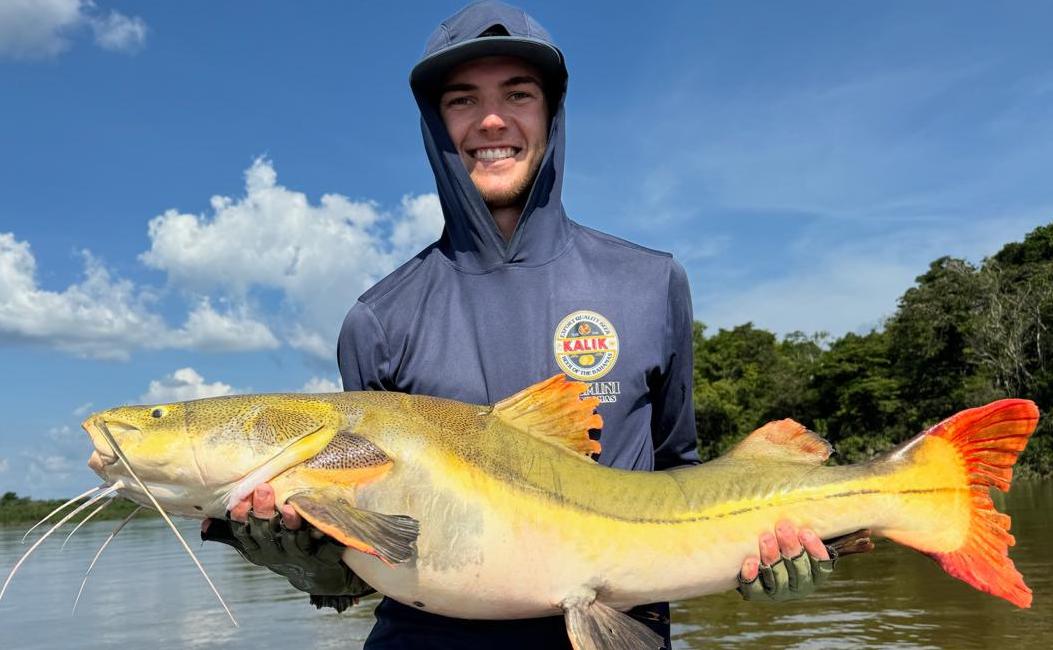[email protected] | 866-832-2987
Redtail Catfish
The Amazon’s Crimson-Tailed Heavyweight
Guide
The redtail catfish, or pirarara in Portuguese, is one of the most iconic and sought-after catfish species in the Amazon. With its vibrant orange-red tail, broad head, and sheer brute strength, it offers an unforgettable experience for anglers targeting exotic giants. Known for its hard strikes, deep runs, and stubborn resistance, the redtail catfish is both a visual marvel and a formidable opponent.
Highly adaptable and widely distributed, this species thrives in a range of Amazonian habitats—from river channels and flooded lagoons to deep pools and submerged structure. Though not as massive as the piraíba, the redtail catfish is arguably the most photographed and instantly recognizable of all Amazonian catfish, and a favorite among anglers pursuing multi-species or heavy tackle adventures.
Interesting Facts & Notes
Despite its fearsome size and looks, redtails are considered docile and can be safely handled with care and wet hands.
Known for producing a loud, bass-like "grunt" when handled, similar to a drum.
The redtail’s vibrant colors fade in captivity, making wild specimens particularly striking.
Where to Catch Redtail Catfish
Quick Facts
| Attribute | Description |
|---|---|
| Scientific Name | Phractocephalus hemioliopterus |
| Common Names | Redtail catfish, pirarara, Amazon redtail |
| Size Range | Commonly 10–40 kg; can exceed 120 lbs |
| Region | Amazon and Orinoco basins |
| Habitat | Riverbeds, deep channels, flooded lakes, submerged wood |
| Behavior | Bottom-oriented, will sometimes hunt in the shallow water |
| Coloration | Black-spotted upper body, pale belly, and bright red-orange tail |
| Aggression | Moderate; strikes hard and holds bottom |
| Feeding Habits | Opportunistic carnivore and scavenger |
| Gamefish Status | Highly prized by sport anglers for strength and size |

Physical Appearance
The redtail catfish has a thick, robust body, large mouth, wide flat head, and a blunt snout. It’s easily distinguished by its striking coloration: a dark, mottled upper body, pale or white belly, and a deeply forked, bright red-orange caudal fin. Juveniles are more vibrantly colored than adults but even large specimens remain visually stunning.
How to Identify
Large size, red-orange tail, white underside
Black mottled back and fins, extremely broad head
Notable trait: Emits an audible grunt when handled
How to Catch Redtail Catfish
Fish for redtails in deep eddies, submerged timber, and river bends—especially during low water when prey concentrates. Let your bait sit on the bottom and wait for the telltale slow pull of a big redtail picking up the scent. Hooksets should be firm and deliberate due to their bony mouths.
Recommended Techniques
Bottom fishing: Let cut bait or live bait rest in deep holes or channels.
Drift fishing: Use natural bait while drifting over likely structure.
Vertical jigging: Tube jigs or metal jigs can be surprisingly effective in deeper water.
Suggested Gear
Rod/Reel: Heavy baitcasting or spinning setup
Line: 80–100 lb braided main line
Leader: 80-100 lb mono or fluorocarbon; wire if piranhas are present
Hook: 6/0–10/0 circle hook for bait
Sinker: 1–3 oz depending on current and depth

Join the Adventure
Experience the power of a redtail catfish firsthand on one of our professionally guided Amazon fishing trips.
Contact us today:
📞 (866) 832-2987
Redtails in Action
Related Reading
References
Zeinad, A. K. & Prado, R. A. (2012). Peixes fluviais do Brasil: espécies esportivas.
Ferreira, E. J. G. et al. (1998). Ecologia do peixe pirarara.
Goulding, M. (1980, 1981). Amazon fish ecology studies.
Santos, G. M. et al. (2006). Fish diversity and behavior in the Amazon basin.
